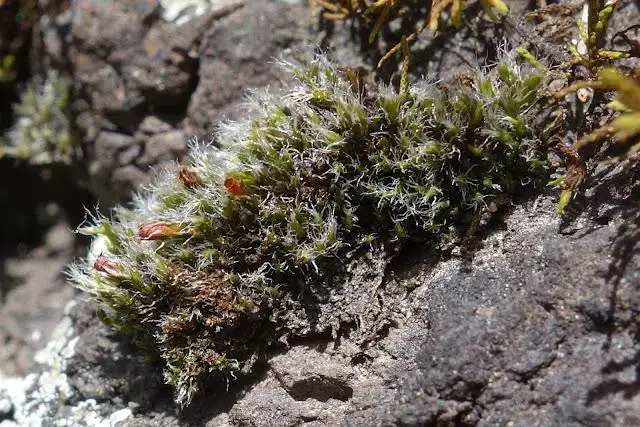
p9201585-scaled.jpg from: https://biofokus.no/harblomstermose-schistidium-bryhnii-gjenfunnet-i-akershus/
Schistidium bryhnii I.Hagen: A Fascinating Moss of the Grimmiaceae Family
Introduction
Today we’re diving into the captivating world of Schistidium bryhnii I.Hagen, a unique moss species belonging to the Grimmiaceae family. This tiny but mighty plant plays important ecological roles and boasts some impressive adaptations. Get ready to learn all about Schistidium bryhnii and gain a new appreciation for the incredible diversity of the plant kingdom!
Background on Schistidium Mosses
Schistidium is a genus of mosses in the Grimmiaceae family, which includes around 110 species worldwide. These small mosses are found in a variety of habitats, from arctic tundra to hot deserts. Many

Schistidium%2Bbhrynii.jpg from: https://moseklubben.blogspot.com/

Schistidium-apocarpum-0318.jpg from: https://www.britishbryologicalsociety.org.uk/learning/species-finder/schistidium-apocarpum/
Schistidium species have special adaptations that allow them to survive in harsh conditions.
Morphology and Identification
Schistidium bryhnii forms dense cushions or tufts, typically 1-3 cm tall. The leaves are lanceolate and have a strong midrib that extends to the leaf tip. One key identification feature is the presence of an awn (a thin, hair-like projection) at the leaf tip. The leaf cells are small and rounded. Capsules are common and are borne on short setae.
Global Distribution and Habitat
This moss has a circumboreal distribution, meaning it is found in northern regions around the world, including Europe, Asia, and North America. It grows on exposed, acidic rock surfaces like boulders and cliffs, often in alpine or subalpine habitats. In some areas, it is considered a

Schistidium-maritimum-1112.jpg from: https://www.britishbryologicalsociety.org.uk/learning/species-finder/schistidium-maritimum/
rare or threatened species due to habitat loss.
Ecological Roles and Adaptations
Like other mosses, S. bryhnii plays important roles in its ecosystem:

Schistidium-rivulare-3.jpg from: https://ohiomosslichen.org/moss-schistidium-apocarpum/
- Helps to break down rock and form soil
- Provides shelter and moisture for invertebrates
- Serves as a pioneer species, allowing other plants to establish
This hardy moss has several adaptations for harsh environments:
- Thick cell walls to prevent water loss

WALL-15.jpg from: https://ohiomosslichen.org/
- Dark pigments to protect from UV radiation
- Ability to dry out completely and rehydrate when water is available

Schistidium-crassipilum-0416.jpg from: https://www.britishbryologicalsociety.org.uk/learning/species-finder/schistidium-crassipilum/

Schistidium-elegantulum-1216-800×600.jpg from: https://www.britishbryologicalsociety.org.uk/learning/species-finder/schistidium-elegantulum/
| Characteristic | Description |
|---|---|
| Size | 1-3 cm tall |
| Leaves | Lanceolate with awn |
Habitat
 bwi-bs271652.jpg from: https://www.agefotostock.com/age/en/details-photo/schistidium-moss-schistidium-apocarpum-agg-growing-on-a-stone-wall-germany/BWI-BS271652 |
Exposed acidic rock |
| Distribution | Circumboreal |
Conclusion
Schistidium bryhnii may be small, but it is a truly remarkable moss with an important ecological role. Its unique adaptations allow it to thrive in challenging habitats. Next time you’re out hiking in the mountains, keep an eye out for this tiny but tough plant! What other secrets do you think the world of mosses holds?

7756ded51fe7ca6ff4240eb50eb4574e–epiphyte-ferns.jpg from: https://www.pinterest.com/pin/358317714084969795/